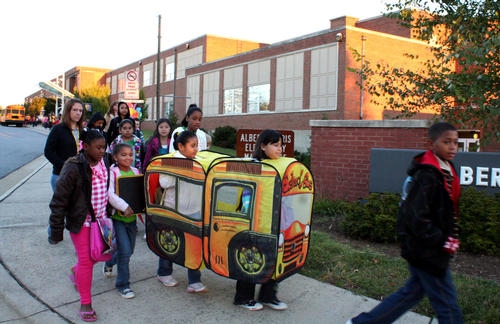By NCPPA
Program: A planned series of future events, items, or performances.
Policy: A proposed or adopted course or principle of action.
One way to get Americans engaged in physical activity is through the use of programming. This might mean regular “classes”, special events, etc. Programs are conducted by government bodies such as recreation and park departments or public schools, by not for profit organizations like the Y, the JCC and also by local community groups.
Programs provide ready made activities that have structure, resources, personnel, etc. but what happens when the class is over or the event ends? Do those same people still engage in the amount of daily physical activity as recommended in the Physical Activity Guidelines for Americans? If not, why not? Likely, it is not nearly as convenient and in the case of a special event, perhaps it is just not logistically possible.
Let’s look at an example… National Walk to School Day. Perhaps your community has created activities surrounding this day…maybe they have gathered volunteers to work as crossing guards so that it is safe for children to cross streets or perhaps they have allowed streets to only be one way to enable safe walking and biking. Many parents participate with their children or talk to their kids who walked/biked about how they enjoyed it…discussion spreads through the “parent network”… “Wouldn’t it be great if the kids could safely walk/bike to school on a regular basis-not just once a year?” They begin to look at what would be needed to make that happen…perhaps its traffic signals-maybe its crossing guards-perhaps its considering walking/biking when making decisions of where to put schools and when developing neighborhoods.

Here’s another one…the local swimming pools are very popular with families and kids. Their activity however, leaves no space for those that want to swim laps. The manager at one pool notices this and institutes time each hour that allows for lap swimming. Word spreads through the community and interested parties start asking other managers to do the same on a trial basis…soon a group of dedicated lap swimmers organizes and approaches policy makers asking for a community wide policy to be developed designating lap swimming time.
This is how policy often starts-particularly on the local level. A group of individuals rally around a problem of common interest and work to educate and influence policy makers about solutions.
The above examples demonstrate how programming can lead to policy. The National Physical Activity Plan is full of ideas on policies that would make it easier for Americans to engage in physical activity where they work, live, worship, shop and- go to school. Local groups interested in instituting some of these polices in their own communities might want to consider hosting events or regular activities that can help educate and shape residents to work towards policies that would make it easier to engage in physical activity on a daily basis.
What ideas do you have for programs that could lead to policies?